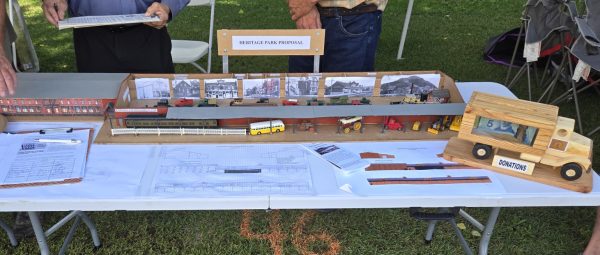What if you could explore Kamloops’ history in a vivid, immersive way that brought old storefronts, vintage cars and steamboats to life? The Kamloops Heritage Park, a concept proposed by the Kamloops Heritage Society (KHS), promises just that: an enclosed facility featuring historic exhibits, cultural displays, a concession, a gift shop and more.
“The heritage park idea came about when we saw and heard about the various pieces of history that are either out there and deteriorating or simply stored away,” says KHS board member Doug Peterson.
“The city has lost so much of its past, such as Chinatown, which was on West Victoria Street, or the steamboat history, which preceded the railway in Kamloops.”

A scale model of the proposed Kamloops Heritage Park facility is displayed at the tenth annual Overlanders Day, a local family-friendly festival, on Sunday, July 20, 2025.
The proposed heritage park would be a year-round community and tourist attraction, creating economic value and a lasting legacy for the city. But before the concept can become reality, KHS was advised to complete an economic impact assessment to strengthen its business case and support grant applications.
That’s where Holly Siebenmorgen came in. A student in the Master in Environmental Economics and Management (MEEM) program at the Bob Gaglardi School of Business and Economics at Thompson Rivers University (TRU), she was eager to take on the challenge after hearing about the project from economics professor and department chair Dr. Laura Lamb.
“What initially interested me in the work was gaining experience to conduct an economic impact study outside the classroom and explore what it would be like in a real-world setting,” says Siebenmorgen.
“My excitement grew when we met with KHS members, and I realized that I would be able to help make their vision come to life by providing them with this report.”
After completing her undergraduate degree in 2020, Siebenmorgen knew she wanted to make a positive impact on both the planet and society, which lead her to TRU’s MEEM program.
“I hope this program will equip me with the skills to make protecting our planet and supporting local economies make sense to large corporations and politicians,” she says.
Her assessment of the proposed park required a careful analysis of future expenditures as well as the positive effects that construction and operations would have on the local economy. She also considered contributions to tourism, volunteerism and cultural life.
“The students in our environmental economics and management master’s programs are uniquely equipped to deliver high-quality economic assessments and applied research to their communities,” says Lamb.
“These programs combine rigorous training in economic theory, quantitative methods and policy analysis with a strong emphasis on sustainability and real-world application.”
Siebenmorgen’s analysis projected annual revenue of $500,000 to $600,000 and about 30,000 visitors per year. The park would directly generate employment for at least five staff and up to three summer students.
“Holly did an excellent job of explaining the economic ripple effects from the park and the lasting legacy it will be for present and future generations,” says Peterson.
The city’s livability and sustainability committee has already endorsed the concept. The next steps include finding a property and fundraising for construction.
People wishing to support the project can do so by becoming KHS members, signing in support or donating. More information is available on the KHS website or by contacting kamloopsheritagesociety@gmail.com.

